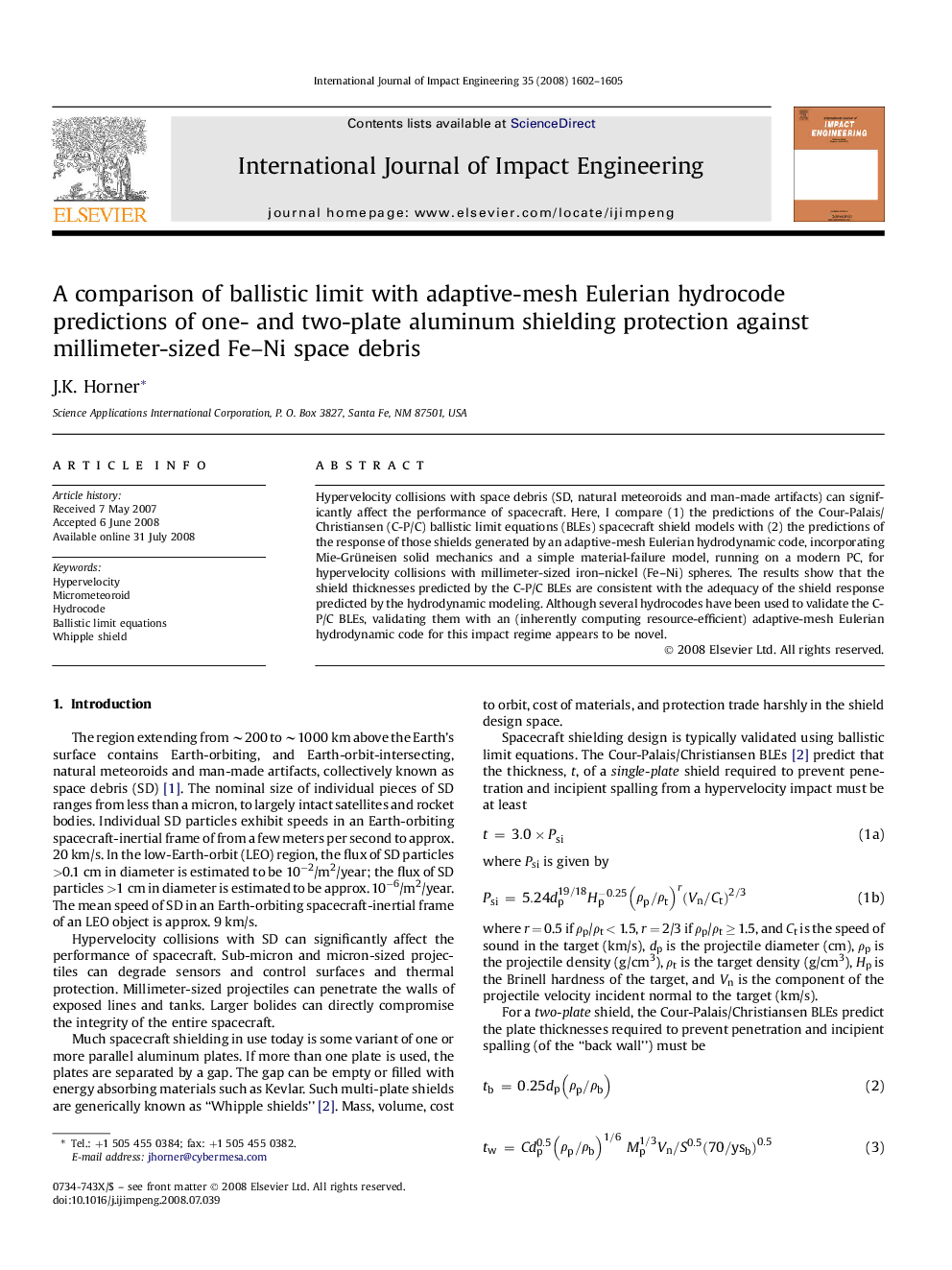| کد مقاله | کد نشریه | سال انتشار | مقاله انگلیسی | نسخه تمام متن |
|---|---|---|---|---|
| 779475 | 1464145 | 2008 | 4 صفحه PDF | دانلود رایگان |

Hypervelocity collisions with space debris (SD, natural meteoroids and man-made artifacts) can significantly affect the performance of spacecraft. Here, I compare (1) the predictions of the Cour-Palais/Christiansen (C-P/C) ballistic limit equations (BLEs) spacecraft shield models with (2) the predictions of the response of those shields generated by an adaptive-mesh Eulerian hydrodynamic code, incorporating Mie-Grüneisen solid mechanics and a simple material-failure model, running on a modern PC, for hypervelocity collisions with millimeter-sized iron–nickel (Fe–Ni) spheres. The results show that the shield thicknesses predicted by the C-P/C BLEs are consistent with the adequacy of the shield response predicted by the hydrodynamic modeling. Although several hydrocodes have been used to validate the C-P/C BLEs, validating them with an (inherently computing resource-efficient) adaptive-mesh Eulerian hydrodynamic code for this impact regime appears to be novel.
Journal: International Journal of Impact Engineering - Volume 35, Issue 12, December 2008, Pages 1602–1605